Cross-Domain Bacteria (CDB) Protein : The Fallout Emerges
Crystal Biology, Synthetic Blood & Clotting, and Polymer Formation
Clifford E Carnicom
Sep 26 2023
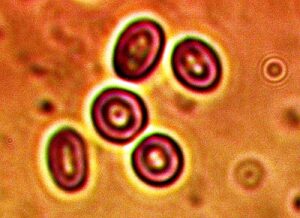
The water-soluble protein that has been isolated from the Cross-Domain Bacteria (CDB) is anything but a single or simple protein. It is a sophisticated complex that is now known to produce a minimum of 10 variants of growth form. There is already known to be great harm to human existence from the CDB and this particular protein. This work clearly confirms the conclusion that synthetic biology is now fully operative across the planet. The work in progress is detailed, extensive and yet preliminary – only the highlights of certain topics will be presented to maintain some modicum of the pace of work.
These multiple forms of growth or creation via culturing include, but are not necessarily limited to:
- Immature protein crystals of irregular geometry
2. Highly developed matured “exotic” biological crystals
3. Polymer formation
4. Synthetic red blood cells
5. Synthetic “blood clotting”
6. Budding biological growth (relatively large structures)
7. Chain CDB formation
8. Protein mass (iron rich complex)
9. CDB
10. Filament production
The focus of this paper will be on items 3, 4 and 5. Before continuing there, let us make some mention of the additional topics with the understanding that none are to be dismissed or disregarded. All are of equal importance here, as they are all part of the same package and we must choose our time and weapons wisely.
Let’s lighten the load a little. Items 1 and 2 have largely been addressed, or at least previewed, with the recent paper, Cross Domain Bacteria (CDB) Protein : Exotic Crystal Biology (Sep 2023). Items 7-10 are ensconced deeply within the historical research of Carnicom Institute (CI), and they need not be introduced from scratch at this point. Item 6, although newly seen, can be viewed as a likely variant of those same items 7-10. What distinguishes it is its larger size.
Our interest here is to delve more deeply into the appearance and confirmation of synthetic blood within the culture work, as it is quite real and will need to be confronted quickly and directly.
The identification of “artificial blood”, now more appropriately called synthetic or genetically altered blood, actually had its debut within CI decades ago. I can and will say that I tried. These two papers, written in 2009, show what was happening at the time, 14 years ago:
Artificial Blood(?) (Aug 27, 2009)
Blood Issues Intensify (Apr 2009)
Two other papers (as a minimum) have a complementary interest here, the first comes from a footnote added to the paper, Morgellons : A New Classification (Feb 2010), as well as the reference to artificial blood within the paper itself.
________________________________________________
“Additional Note Feb 11 2010:
For those that consider the extent of this article to be implausible, please refer to the public disclosure on February 05, 2010 of the project by the Defense Advanced Research Projects Agency (DARPA) to develop immortal “synthetic organisms”, as outlined in the unclassified version of the 2011 budget. 7 From a recent article8 on the budget that has been published, it declares that,
“As part of its budget for the next year, DARPA is investing $6 million into a project called BioDesign, with the goal of eliminating “the randomness of natural evolutionary advancement.”
It may be of interest to compare this phrase with that which has been declared within this report:
“It is very difficult to envision, at this state of knowledge, that this “organism” (for the sake of discussion) is the result of any “natural” or “evolutionary” process.”
There are many that believe that the accomplishments from classified projects and budgets precede the disclosure of similar goal-oriented unclassified projects by a factor of many years to decades. My appreciation is extended to the individual that brought this disclosure to my attention.
Clifford E Carnicom
Feb 11, 2010.”
________________________________________________
A second paper might also be of interest, and it is titled, ” The Transformation of a Species?” ( Nov 2019). Under the circumstances now coming to the fore, it speaks for itself.
The history surrounding the Artificial Blood paper is of interest in its own right. It was not a paper I wished to write, as I knew that it would cause trouble. And indeed it did. The polite way of characterizing the response to the paper was abject denial regardless of the evidence presented; the more honest assessment is that of character assassination of the highest order. And in a more humorous vein, no, the blood did not arise from a non-existent fish fertilizer plant in the non-industrial remote landscape of Lamy, NM. Que sera, sera, the paper was required to be written, and so it was.
OK then, for a decade and a half (actually 25+ years) we have had synthetic blood unwillingly integrated into our human biology. And now, post Covid Era, it seems to be clotting more commonly as well as killing people more visibly. I think that it is beyond time to wise up and stop playing the proof game. That luxury no longer exists, and be assured, it has been spent.
Let’s look at a few photographs under the scope. Bear in mind, these images develop entirely from a culture process and not a human being. As stated in earlier work, blood cells are not supposed to grow in a test tube. That was the case 15 years ago and it is supposed to be the case now as well. But they do, and they are growing under the right conditions and knowledge of those conditions. Central to these events shown is the isolation and understanding of a protein endemic to the CDB. What is shown here is a genetically engineered, synthetic biological process that involves, interacts with, and alters human blood cells. The operation has been active over 2 1/2 decades, and it has been complicated further with the advent of the Covid Era. I do wish that I could be kinder about it, but there is a phrase called “tough love”.

Synthetic – Genetically Engineered Erythrocytes Isolated from CDB Protein Culture
CDB can be seen internal to cells
Magnification 8000x
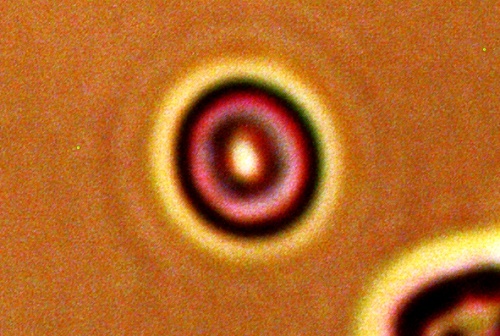
Singular Synthetic – Genetically Engineered Erythrocyte Isolated from CDB Protein Culture
Magnification 8000x
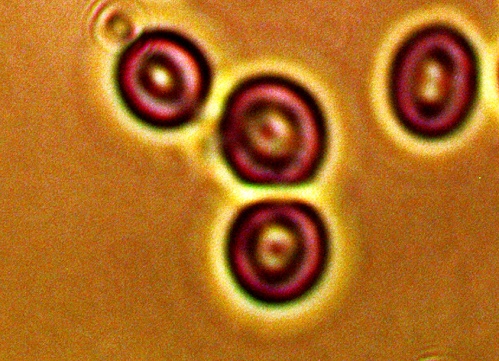
Synthetic – Genetically Engineered Erythrocytes Isolated from CDB Protein Culture
Magnification 8000x
Unfortunately, the situation does not cease with the existence of the erythrocytes. The equivalent of a synthetic blood clot is also a feature of this scenario.
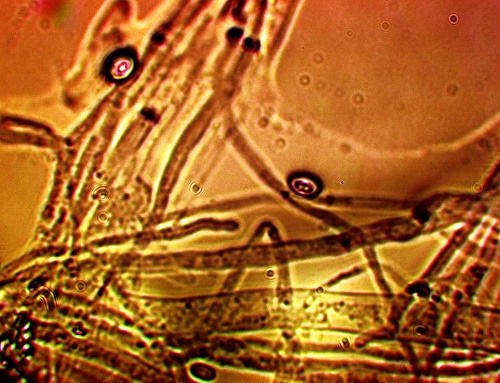
Combination of CDB Filaments, Synthetic Erythrocytes and Polymer Matrix
(i.e., “synthetic blood clot”)
Magnification 8000x
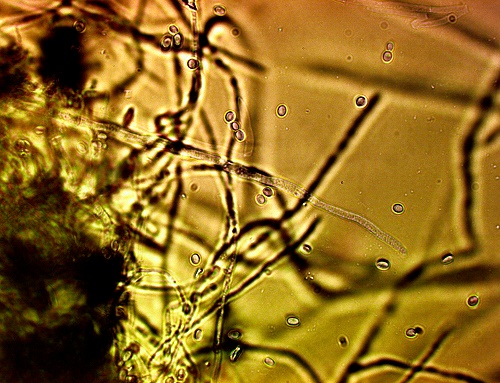
Combination of CDB Filaments, Synthetic Erythrocytes and Polymer Matrix
(i.e., “synthetic blood clot”)
Magnification 3200x
Furthermore, there is a polymer matrix (film or plastic like) that binds the CDB filaments and the blood cells together, creating a cohesive network that is coagulative in its very nature. In essence, it is the ideal synthetic blood clot.
Over recent months, I have collaborated with Dr. Ana Mihalcea and her colleagues in the investigation of blood clots from both living and deceased individuals. The results of that investigation are published on the Carnicom Institute and Dr. Mihalcea’s MD, PhD sites (Part I, Part II, Part III). In summary, the final conclusion reached was that the clots consist of a combination of the CDB, filaments and red blood cells within a polymerized mass. Exactly as above.
In the first case we have the expression and creation of a clotting mechanism and structure of known origin in a laboratory setting (in vitro) and the other within human beings. They are of the same nature. The latter has led to increased mortality with absolutely no doubt and it is clearly understood as to why and how. As with many other facts now before is, there need be no mystery as to what the source of coagulation and clotting is, regardless of the impact from the Covid Era.
Analytic comparisons have been made or are in progress between human blood and the isolated synthetic blood. They will be discussed at a later stage. The anticipated impact upon human blood, at least in the generalized sense, will be included. In addition, a lineage of health impact that includes the above findings and the history of Carnicom Institute research (that now includes the Covid Era) will be introduced. We have a long history together now, and the picture is much broader than that receiving the majority of attention over recent months or years.
Clifford E Carnicom
Born Clifford Bruce Stewart, Jan 19 1953.




